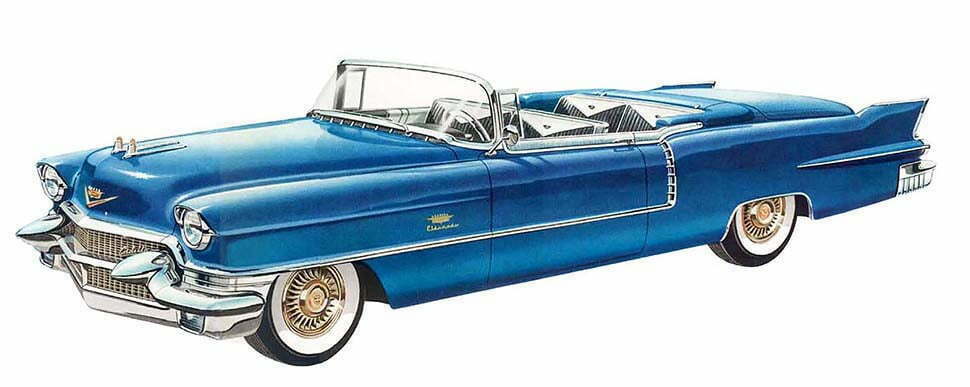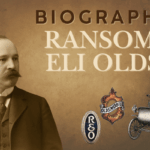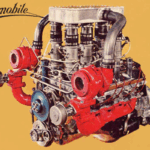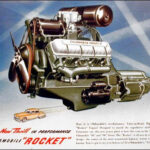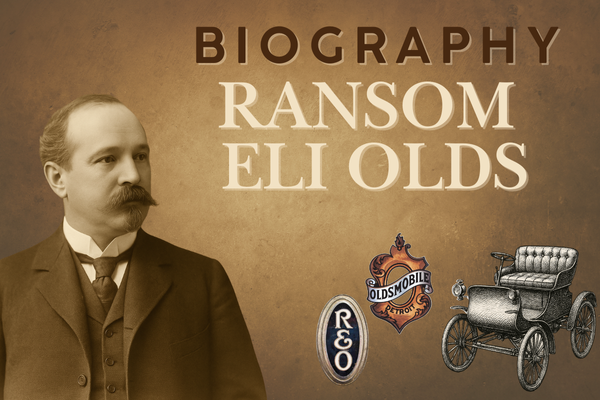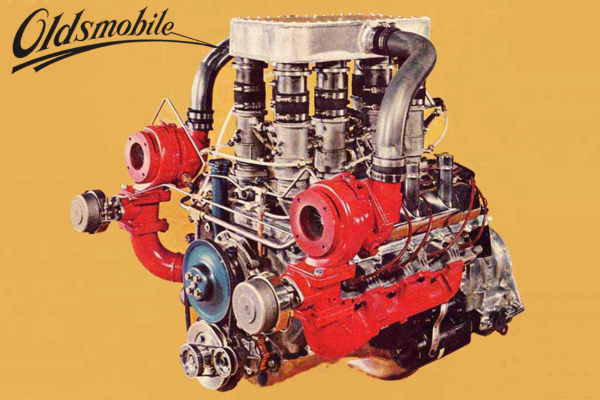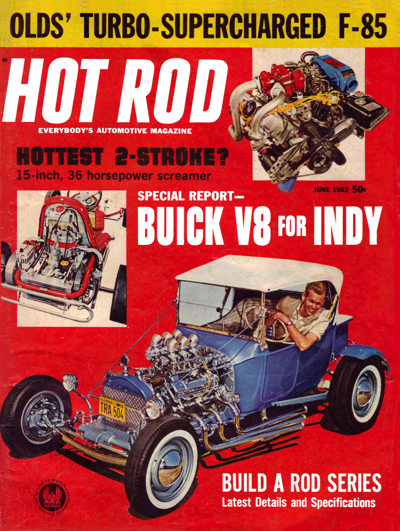Cadillac marked its 40th consecutive year of V-8 availability in 1954, and the ’54 engine was a far cry from the 70 brake horsepower Type 51 motor of 1914. The 1954 powerplant was 331 CID, included a four-barrel carburetor, boasted an 8.25:1 compression ratio, and was now rated at 230 HP. Cadillac sales in 1954 fell from the previous year’s peak of 109,119 to 94,530, but that was still the second-best in post-war production.
In 1955 sales suddenly jumped to 141,000 deliveries — this was the year of frenzied automobile buying by the US public, and Cadillac was treated to a piece of that pie. The product line now included the Eldorado, a super-luxury model that sold 3,950 in its first year. For several years the Eldorado was marketed with styling touches that the rest of the line would adopt a year or two later. Power seats, power steering, and electric windows were fitted as standard in some models. More and more Cadillac owners had their cars optioned with air conditioning.
For 1956, sales continued to rise, with 155,577 produced, almost triple the number for 1950! In the same year, Packard was gasping its final breaths, and Imperial sales were dropping. Only Lincoln’s production increased dramatically, but at 50,322, it had a long way to go to match Cadillac. The “Standard of the World” was dominating the top rung of the U.S. auto market.
In 1957 Cadillac stunned the luxury market with completely new styling and their own 300 and 325 HP V8s. It also released another show car come to life, the 4-door Eldorado Brougham, which debuted in the GM traveling Motorama in 1955. The Eldorado, with its advanced styling, was priced above $13,000, a huge sum for its day. But the Brougham came with every conceivable option plus a few features never before seen on any car. The buying frenzy of the previous two years, however, was waning as the U.S. tumbled into what would turn out to be a huge recession.
It has been said that the 1958-1960 era could be called the over-gilded age of automotive design, and Cadillac, like others, was guilty of excessive use of towering tailfins, unnecessary chrome and stainless – and most of all, size and weight. The 1958 cars were not that much different from the ’57s, but somehow, they seemed even larger and more ostentatious – and when combined with the reduced income in even the affluent buying crowd, Cadillac sales plunged – not drastically, but a significant drop – from 146,841 in 1957 to 121,580.
Whatever the case, 1959 Cadillacs were even more outrageously styled and appeared even more overstuffed. To some, the 1959 car is regarded as the ultimate picture of luxury cars of this era. The 1959 Cadillac has come to represent a cultural symbol of its day. Twin teardrop tail lights on either side of huge fins were not what one could call conservative in a market that seemed to reward less overstated vehicles. Though panned buy automotive critics as “just too showy,” sales rose by over 11,000 to a total of 132,272! So much for that wisdom.
The following year, 1960, the cars, though somewhat similar to 1959 in the front fascia, were clearly moved towards a more sophisticated styling approach. Tail fins, a Cadillac hallmark since 1949, were reduced in size and more swept back along the body line. The over-the-top taillights of 1959 were hidden in the rear bumper. While no smaller than the previous car, the new Cadillac appeared leaner and more lithe. The public responded with Cadillac’s second-best sales year ever, delivering 142,184 units.
The lesson was learned, going forward, Cadillac would return to its crisp, conservative roots, and sales would rise almost every year.




